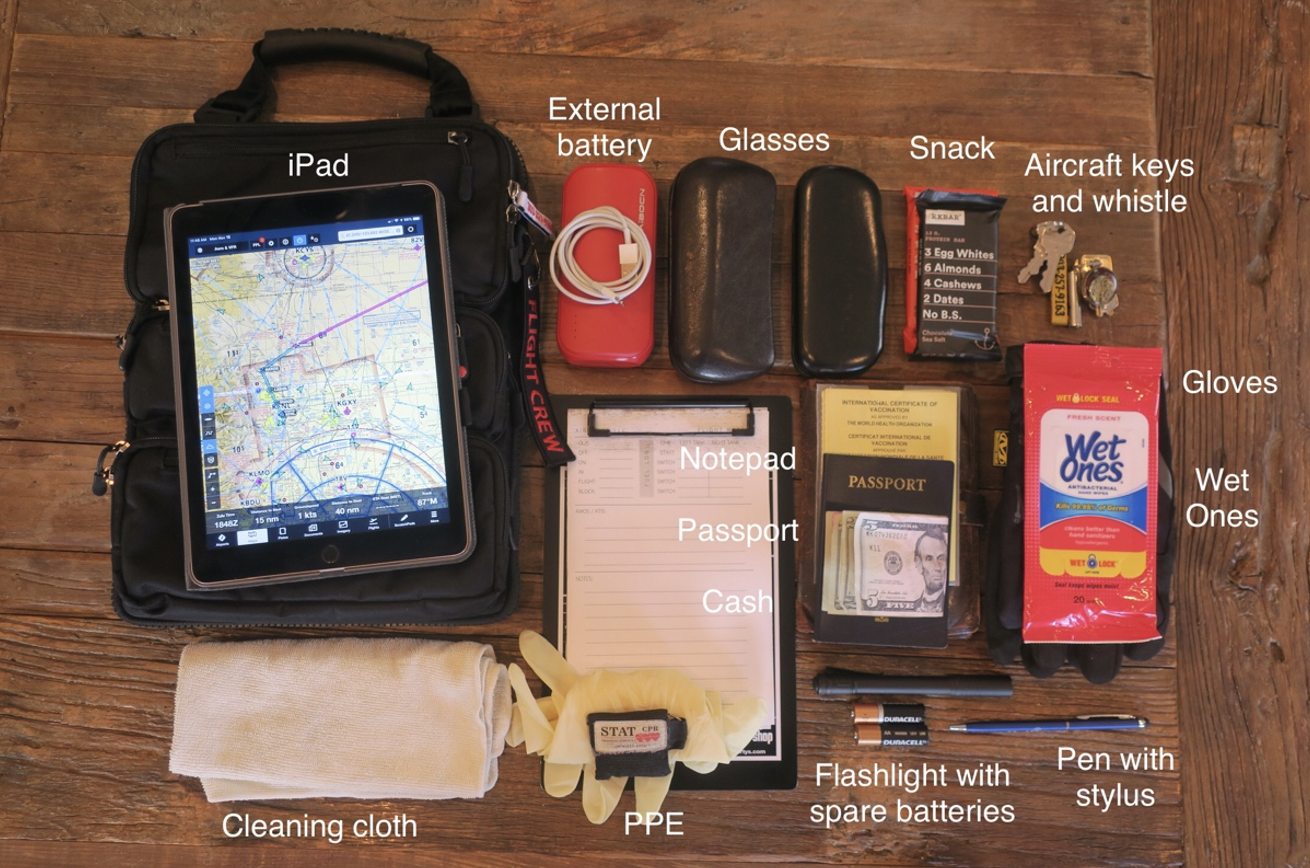
There are a number of existing checklists to help pilots in single-pilot cockpits prepare, organize and safely fly. While torturing the mnemonic a bit, the FAA’s “IMSAFE” works well as does the private pilot’s “ARROW” reminder. The NBAA offers a single-pilot risk management guide. But there is no such thing as a “one size fits all” checklist for single-pilot cockpits.
The things to do and space available for a CJ2 pilot, for example, is a world away from a pilot taking a Citabria through its paces. What follows is a starting point, ready for customization.
Personal Questions . . . “IMSAFE” plus “Am I?”
*Illness?
*Medication?
*Stress?
*Alcohol?
*Fatigue?
*Emotion?
*Am I tired?
*Am I distracted?
*Am I in a rush?
Am I legal? (experience, recency, license, medical)
*Am I sure?
Aircraft Questions . . . “ARROW”
*Airworthiness Certificate
*Radio Station License
*Registration Certificate
*Operating Limitations
*Weight and Balance
Equipment . . . Pack
*Aircraft checklists
*Flight plan
*Charts
*Pencil and paper
*iPad, smart phone
*Kneeboard, headset, oximeter, eye glasses
*Portable GPS, backup radio
Timing . . . Adjust
*If operating unassisted, remember you will not be able to multitask and normal completion times for many events can double or triple; such as: getting the aircraft on line, fueling, catering, stocking, maintenance tracking, loading bags, briefing passengers, updating aircraft manuals, and so forth.
Aircraft . . . Checked
*Inspections signed off?
Equipment need for forecast conditions operable?
*Performance adequate for climb, en route, and landing?
Weather . . . Checked
*Ceiling and visibility above minimums for takeoff, en route, and landing?
*Turbulence, icing, winds, and other hazards within acceptable limits?
Electronics . . . Checked
*Fully charged
*Applications updated
Flight Tracking . . . Enable
*File a VFR or IFR flight plan
*At the very least, let someone know when you are leaving and your destination
Weather . . . Check
*If flying VFR, you will need to ensure you can remain VFR
*If flying IFR, you will need to ensure the weather doesn’t exceed your aircraft or your personal capabilities
Cockpit . . . Organize
*Build your “nest” with everything you need within arm’s reach of the pilot’s seat
*Secure your backup equipment in a backpack or suitable bag that is itself secured to something within arm’s reach
*Organize paper documents (flight plan, airfield diagrams, departure procedure, en route charts, arrival, approach charts) in the order you will need them.
*Organize electronic documents with each application open to correct pages.
Passengers . . . “SAFETY” Brief
*Seat belts (fastened for taxi, takeoff, landing)
*Seats adjusted and locked in place
*Air vents (location and operation, in case of passenger discomfort)
*Fire extinguisher (location and purpose)
*Exit door (how to secure and open),
*Emergency evacuation plan
*Emergency survival kit (location and contents)
*Traffic (scanning, spotting, notifying pilot)
*Your questions?
*Cover pilot distraction prevention techniques (don’t interrupt when pilot is talking into microphone, manipulating controls or other instruments, studying paper or electronic documents)
Electronics
An iPad can host everything you need to conduct everything from the simplest VFR to the most complex IFR flight, but you will need a backup. That can be a second iPad with identical applications. Or, if the applications have iPhone or Android versions, it can be your phone. But you need to make sure the backup electronics are fully charged and updated.
Backpack
Gulfstream G650 pilot Ron Rapp has some advice for packing equipment for single-pilot duties. (He spends almost as much time flying crew aircraft as he does single-pilot in a wide variety of airplanes.)
“I do fly single pilot a lot, but not in turbine aircraft. It’s all light GA flying. Despite that, I actually travel with the same stuff I use when flying the Gulfstream, and the cockpit is set up the same way in a DA40, Cirrus, RV6/7/9, Stinson, Bonanza: everything is on the iPad.
“The only concessions I make are 1) since Foreflight updated the iPhone app so that it’s identical to the iPad one, in a tight airplane like an RV-4 or -8, I’ll use the iPhone in place of the iPad due to the tandem seating configuration, and 2) if I’m flying the Pitts or Extra, there’s room for… nothing. No pens, no kneeboards, no cellphone, no iPad. That stuff, if it came loose, would migrate to the tail and jam the elevator. I literally sit on the checklist--it lives between the parachute seat pack and my thigh. I use a paper chart and also jam it under my parachute. Being paper, those items are unlikely to jam the elevator completely, even if they did come loose.
“In a more typical GA airplane I use the same backpack I take into the Gulfstream. For one thing, it’s easy to have a single container for all airplanes. Also, I know where everything is inside it. Batteries, flashlights, cables, battery pack, cellphone, laptop, headset, iPad, oximeter, even snacks if I need some energy. Lots of compartments. Flexible container. And everything is zippered so nothing falls out,” says Rapp.
Conclusion
Most of the skills and techniques needed in a multi-pilot cockpit have their place when flying single pilot, but the requirement for proper planning and organization are even higher. Customizing a checklist ahead of the flight allows you to think things through without the pressures of on-the-spot decision making clouding your judgement.





